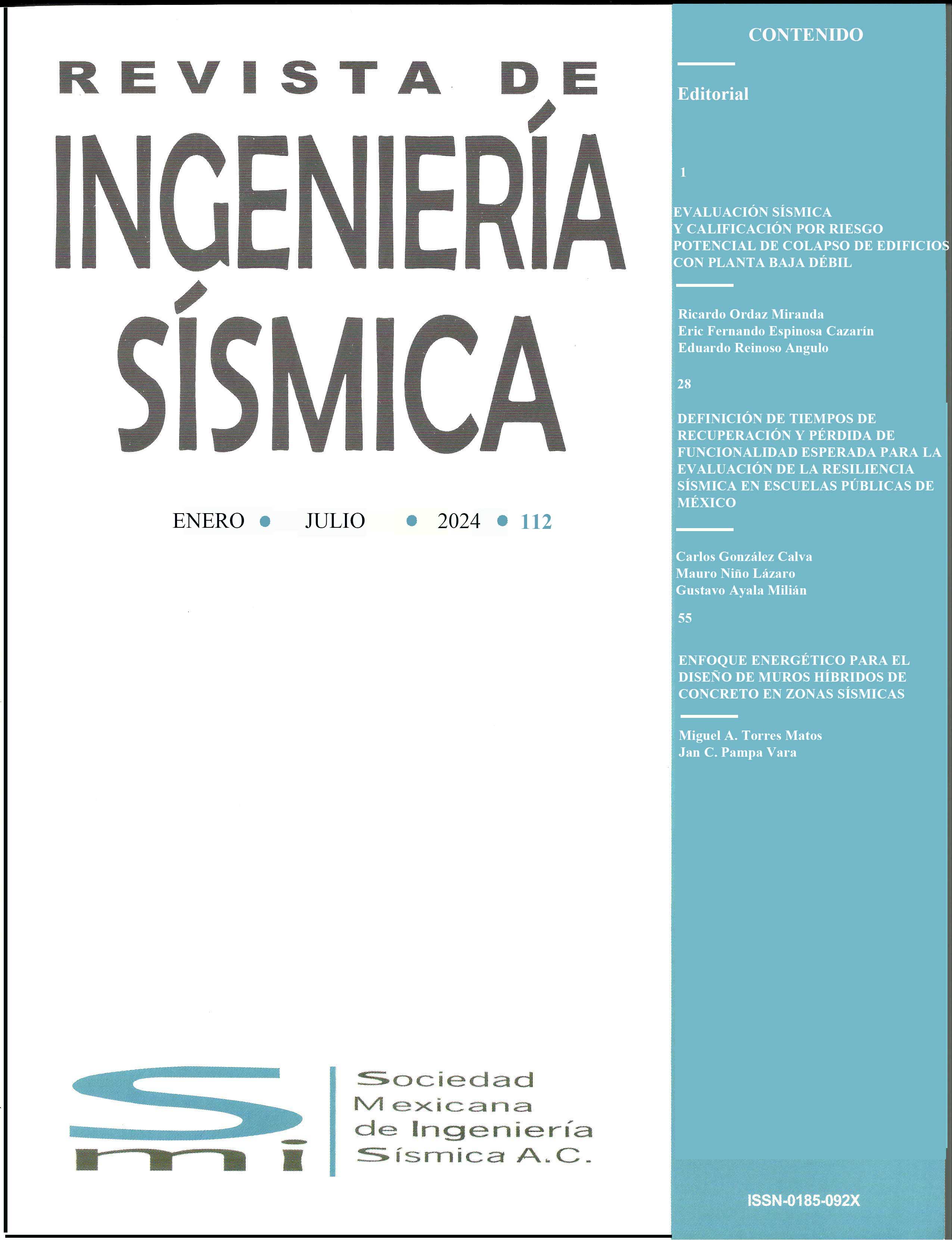SUPPLEMENTAL DAMPING FOR NEW AND RETROFIT CONSTRUCTION*
DOI:
https://doi.org/10.18867/ris.61.236Abstract
Supplemental damping (energy dissipation) hardware are being employed in the United States to provide enhanced protection for new and retrofit building and bridge construction. Such hardware includes displacement- and velocity-dependent dampers. The types of dampers being implemented in the United States at this time are presented in the paper. Guidelines and commentary to aid in the implementation of passive supplemental dampers in existing construction are included in the new resource documents FEMA 273 and 274: Guidelines for the Seismic Rehabilitation of Buildings (FEMAThi, 1997). This paper introduces the FEMA 273 analysis procedures and outlines the modeling and analysis procedures developed for implementing supplemental dampers. Two new developments in the field of supplemental damping that will facilitate their application to stiff structural framing systems are the toogle-brace and scissors-jack damper configurations. These configurations are presented in the paper and their utility is demonstrated by comparison with conventional configurations for a sample single-story, single-bay frame.Downloads
References
Aiken, I. D. and J. M. kELLY, 1990. Earthquake Simulator testing and Analytical Studies of Two Energy Absorbing Systems for Multistory Structures, Report, No.UCB/EERC-90/03, Earthquake Engineering Center, University of California, Berkeley, CA.
ATC, 1993. Proceedings of Seminar on Seismic Isolation, Passive Energy Dissipation, and Active, Control, Report No. ATC-17-1, Applied Technology Council, Redwood City, CA, March.
Bruneau, M., C. M. Uang, and A.S. Whittaker, 1998. Ductile Design of Steel Structures, McGraw Hill. N.Y.
Constantinou, M.C. and M.D. Symans, 1993. "Experimental Study of seismic response of buildings with supplemental fluid dampers, "The Structural Design of Thall Buildings,2,pp. 93-132.
Constantinou, M. C., P. Tsopelas, and W. Hammel, 1997, Testing and Modeling of and Improved Damper Configuration for Stiff Structural Systems, Center for Industrial Effectiveness, State University of New York, Buffalo N.Y.
Constantinou, M. C., T.T. Soong, and G.F. Dargush, 1998, Passive Energy Dissipation Systems for Structural Design and Retrofit, NCEER, Monograph, National Center for Earthquake Engineering Research, Buffalo, N.Y.
EERI, 1993. Tneme Issue: Passive Energy Dissipation, Earthquake Spectra, 9, pp. 319-636.
FEMA, 1995. 1994 NEHRP Recommended Provisions for Seismic Regulations for New Buildings, Report No. FEMA 222A, Washington, D.C.
FEMA, 1997. NEHRP Guidelines for the Seismic Rehabilitation of Buildings, Report No. FEMA 274 (Commentary), Federal Emergency Management Agency, Washington, D.C.
ICBO, 1997. Uniform Building Code, international Conference of Buildingo officials, Whittier, CA.
Makris, N., M. C. Constantinou, and G.F. Dargush, 1993. "Analitycal model of viscoelastic fluid dampers, "Journal of Structural Engineering, ASCE, 119, pp. 3310-3325.
Nims, D.K., P.J. Richter, and R.E. Bachman, 1993. "The use of the energy dissipating restraint for seismic hazard mitigation, "Earthquake Spectra, 9, pp. 467- 498.
Soong, T.T., and M.C. Constantinou, 1994. Passive and Active Structural Vibration Control in Civil Engineering, Springer-Verlag, Wien.
Soong, T.T., and G.F. Dargush, 1997. Passive Energy Dissipation Systems in Structural Engineering, J. Wiley, England.
Tsopelas, P., M. C. Constantinou, C. A. Kircher, and A. S. Whittaker, 1997. Evaluation of Simplified Methods of Analysis for Yieding Structures, Report No. NCEER-97-0012, National Center for Earthquake Engineering Research, State University of New York, Buffalo, NY.
Watanabe, A. Hitomi, E. Saeki. A. Wada, and M. Fujimoto, 1998. "Properties of brace encased in buckling restrained concrete and steel tube," Proceedings of the Ninth Wordl Conference on Earthquake Engineering, vol 4, pp 719-723, Tokyo.
Whittaker, A. S., V.V. Bertero, J, Alonso, and C.L. Thompsom, 1989. Earthquake Simulator Testing of Steel Plate Added Damping and Stiffness Elements, Report No. UCB/EERC-89/02, Earthquake Engineering Research Center, university of California, Berkeley, CA.
Whittaker, A. S., M.C. Constantinou, and P. Tsopelas, 1998. "Displacement estimates for performance-based seismic design," Journal of Structural Engineering, vol. 124, no. 8, pp 905-913, ASCE, Washington, D.C.





